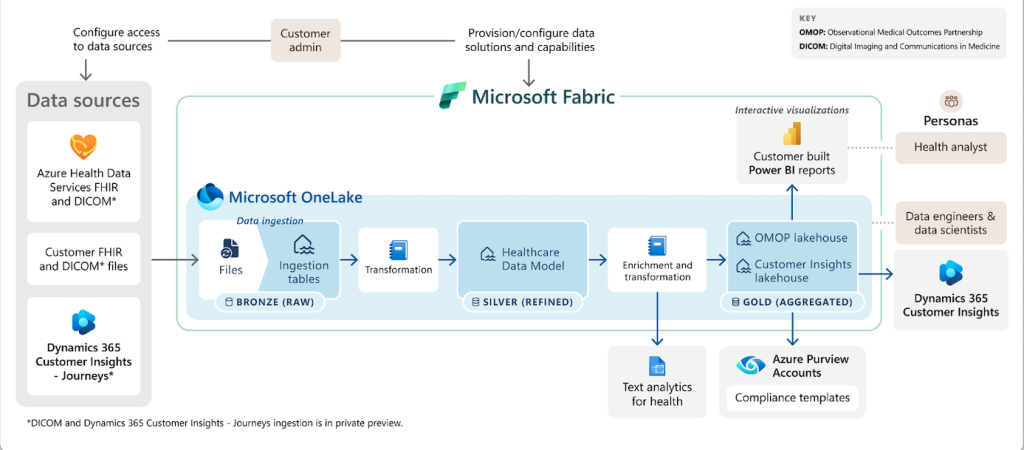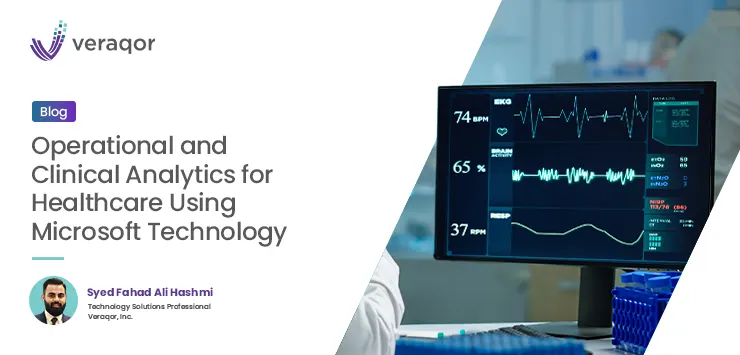The Healthcare Operational Analytics Market is projected to grow from $12.13 billion in 2024 to $25.40 billion by 2029, with a CAGR of 13.38% during this period. Operational and clinical analytics provide crucial insights that drive improvements in patient care and efficiency. With Microsoft technology, healthcare providers can leverage data to make informed decisions, streamline processes, and enhance outcomes.
These technologies enable seamless data integration, ensuring comprehensive and real-time information access. This integration facilitates better resource allocation, efficient operations, and improved patient monitoring. Operational analytics focuses on optimizing healthcare services—reducing costs while maintaining high standards. Clinical analytics, conversely, analyzes patient data to uncover trends and inform treatment plans. More on these later.
This quarter, Veraqor rolled out their webinar on Operational and Clinical Analytics for Health care. Our esteemed audience, who had registered in advance, leveraged the opportunity to understand in depth the benefits and path of implementing end-to-end analytics for their healthcare entities. The webinar recording is available here; watch it now to discover details on how your healthcare data can be used better.

Here’s the technical diagram of how data is acquired, ingested, and utilized using Microsoft technologies. Let’s quickly see what we discussed in the webinar and how you can establish Operational and Clinical Analytics excellence at your Healthcare institution with Veraqor today.
The healthcare landscape is rapidly evolving, and operational and clinical analytics have emerged as critical tools for improving patient care, optimizing resources, and enhancing overall efficiency. Leveraging Microsoft’s robust technology suite, including the comprehensive Microsoft Fabric for Healthcare solution, healthcare organizations can transform their data into actionable insights, driving significant business impact.
Read on as this blog delves into the deployment specifics, benefits, and reference cases of utilizing Microsoft technology for operational and clinical analytics in healthcare.
Challenge/Transformation
Healthcare organizations face several challenges, including:
1. Data Silos: Clinical and operational data are often stored in disparate systems, making it difficult to gain a holistic view.
2. Resource Optimization: Efficiently allocating resources such as staff, equipment, and facilities can be challenging without accurate and timely data.
3. Patient Care: Enhancing patient outcomes requires real-time insights into clinical data to inform decision-making.
4. Regulatory Compliance: Adhering to healthcare regulations and ensuring data privacy and security is paramount.
Approach
Microsoft provides a comprehensive suite of tools that address these challenges through advanced analytics, artificial intelligence (AI), and cloud computing. Central to this approach is Microsoft Fabric for Healthcare, a tailored solution designed to streamline data integration, analysis, and visualization. Here’s how these tools come together:
1. Microsoft Fabric for Healthcare: Offers a unified data foundation that integrates disparate healthcare data sources, enabling seamless analytics and AI-driven insights.
2. Power BI: Offers powerful visualization and reporting capabilities, making data insights accessible and actionable for healthcare professionals.
3. Azure Machine Learning: Supports predictive analytics to anticipate patient needs and optimize resource allocation.
4. Azure Health Data Services: Ensures secure and compliant data management, supporting interoperability standards such as FHIR (Fast Healthcare Interoperability Resources).
5. Dynamics 365: Enhances patient engagement and operational efficiency through integrated CRM and ERP capabilities.
Deployment Specifics
Quarter 1: Data Integration and Visualization
Challenge: Fragmented data systems.
Solution: Implement Microsoft Fabric for Healthcare to integrate data from EMRs, financial systems, and operational databases. Use Power BI to create dashboards that provide a unified view of clinical and operational metrics.
Outcome: Improved decision-making through real-time data visibility.
Quarter 2: Predictive Analytics for Resource Optimization
Challenge: Inefficient resource allocation.
Solution: Deploy Azure Machine Learning to develop predictive models that forecast patient admissions, equipment usage, and staffing needs.
Outcome: Enhanced resource planning and reduced operational costs.
Quarter 3: Enhancing Patient Care with Real-Time Insights
Challenge: Delayed clinical decision-making.
Solution: Utilize Azure Health Data Services to ensure secure, real-time access to patient data across care teams. Implement Power BI for clinicians to track patient progress and outcomes.
Outcome: Improved patient outcomes and reduced length of hospital stays.
Quarter 4: Ensuring Compliance and Data Security
Challenge: Regulatory compliance and data security.
Solution: Leverage Azure’s built-in security features and compliance certifications. Use Dynamics 365 to manage patient interactions and ensure data privacy.
Outcome: Maintained compliance with healthcare regulations and increased patient trust.
Benefits and Business Impact
Improved Patient Outcomes: Real-time access to clinical data allows for timely interventions, reducing complications and hospital readmissions.
Operational Efficiency: Integrated data systems and predictive analytics optimize resource utilization, leading to significant cost savings.
Enhanced Decision-Making: Unified data views and advanced analytics provide healthcare professionals with the insights needed to make informed decisions.
Regulatory Compliance: Secure and compliant data management ensures adherence to healthcare regulations, protecting patient information.
Reference Case: Improving Emergency Room Efficiency
Challenge: A large metropolitan hospital faced long wait times in its emergency department, leading to patient dissatisfaction and overcrowding.
Approach: The hospital integrated its EMR and operational data using Microsoft Fabric for Healthcare and Azure Synapse Analytics. They developed predictive models with Azure Machine Learning to forecast peak times and optimize staffing. Power BI dashboards were created to monitor real-time patient flow and resource availability.
Outcome: The hospital reduced average wait times by 30%, improved patient satisfaction scores, and optimized staffing levels, resulting in a 20% reduction in overtime costs.
Note: This reference case discussed above is illustrative. For verified examples, you can refer to documented case studies such as the one from St. Luke’s Health System, which utilized Microsoft Azure and Power BI to streamline their data analytics and improve operational efficiency.
Conclusion
Overall, by leveraging Microsoft’s comprehensive technology suite, including the Microsoft Fabric for Healthcare solution, healthcare organizations can overcome significant challenges, optimize operations, and enhance patient care. The deployment of operational and clinical analytics not only drives business impact but also transforms the healthcare landscape, making it more efficient, responsive, and patient-centric. As demonstrated in the deployment specifics and reference cases, the benefits of this transformation are profound and far-reaching

Syed Fahad Ali Hashmi
Syed Fahad Ali Hashmi is a seasoned Cloud Solution Architect with 10+ years of experience. He leads Data and Analytics (Cloud) solutions at Veraqor and specializes in digital transformation through data modernization and hybrid data platform migration, focusing on Microsoft Azure. Fahad delivers business solutions for actionable insights, decision-making optimization, and innovation across various sectors globally.

Syed Fahad Ali Hashmi
Syed Fahad Ali Hashmi is a seasoned Cloud Solution Architect with 10+ years of experience. He leads Data and Analytics (Cloud) solutions at Veraqor and specializes in digital transformation through data modernization and hybrid data platform migration, focusing on Microsoft Azure. Fahad delivers business solutions for actionable insights, decision-making optimization, and innovation across various sectors globally.



